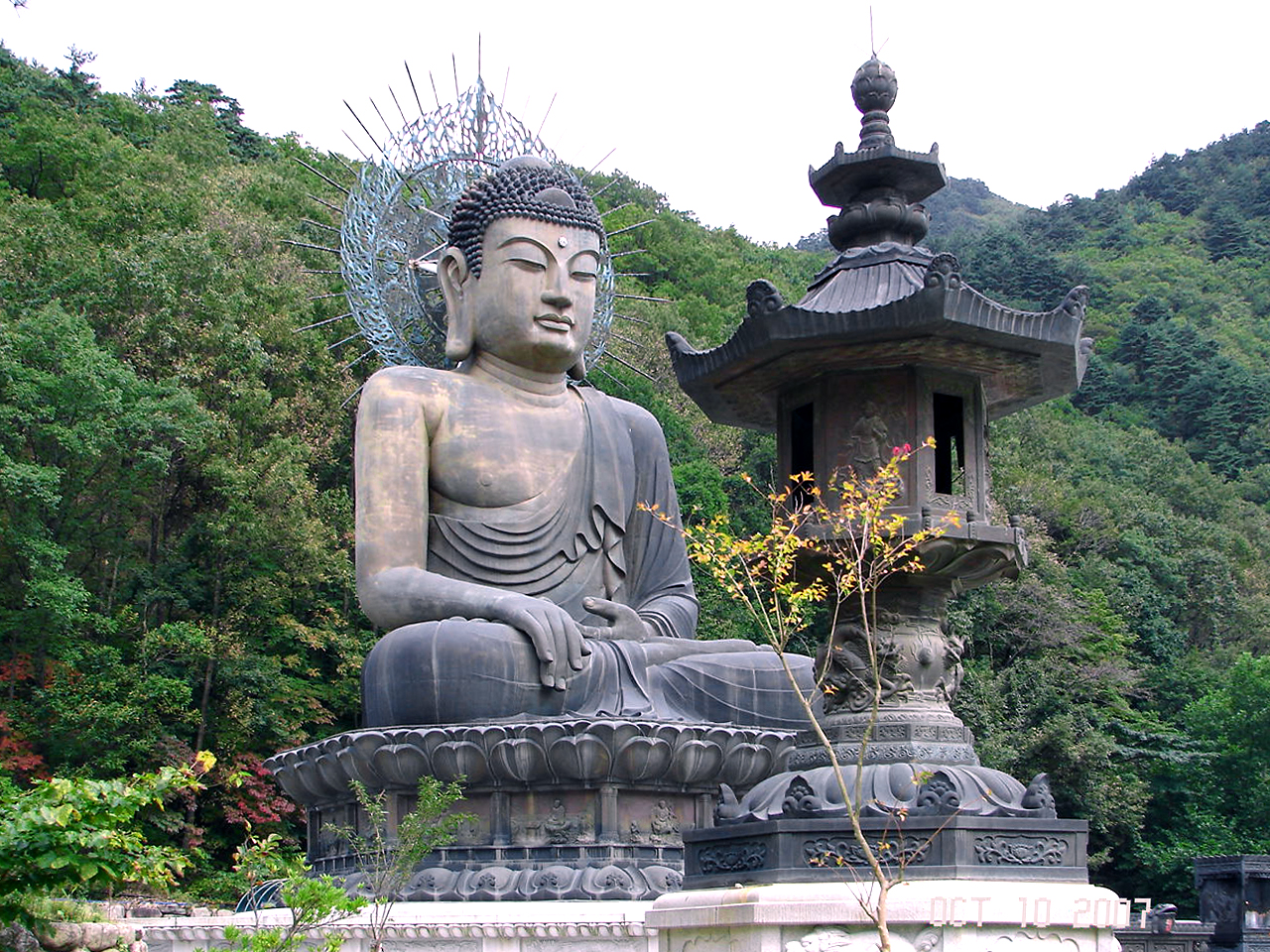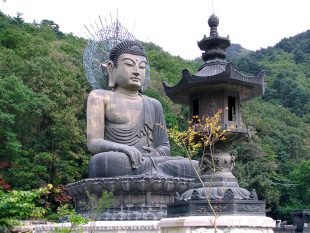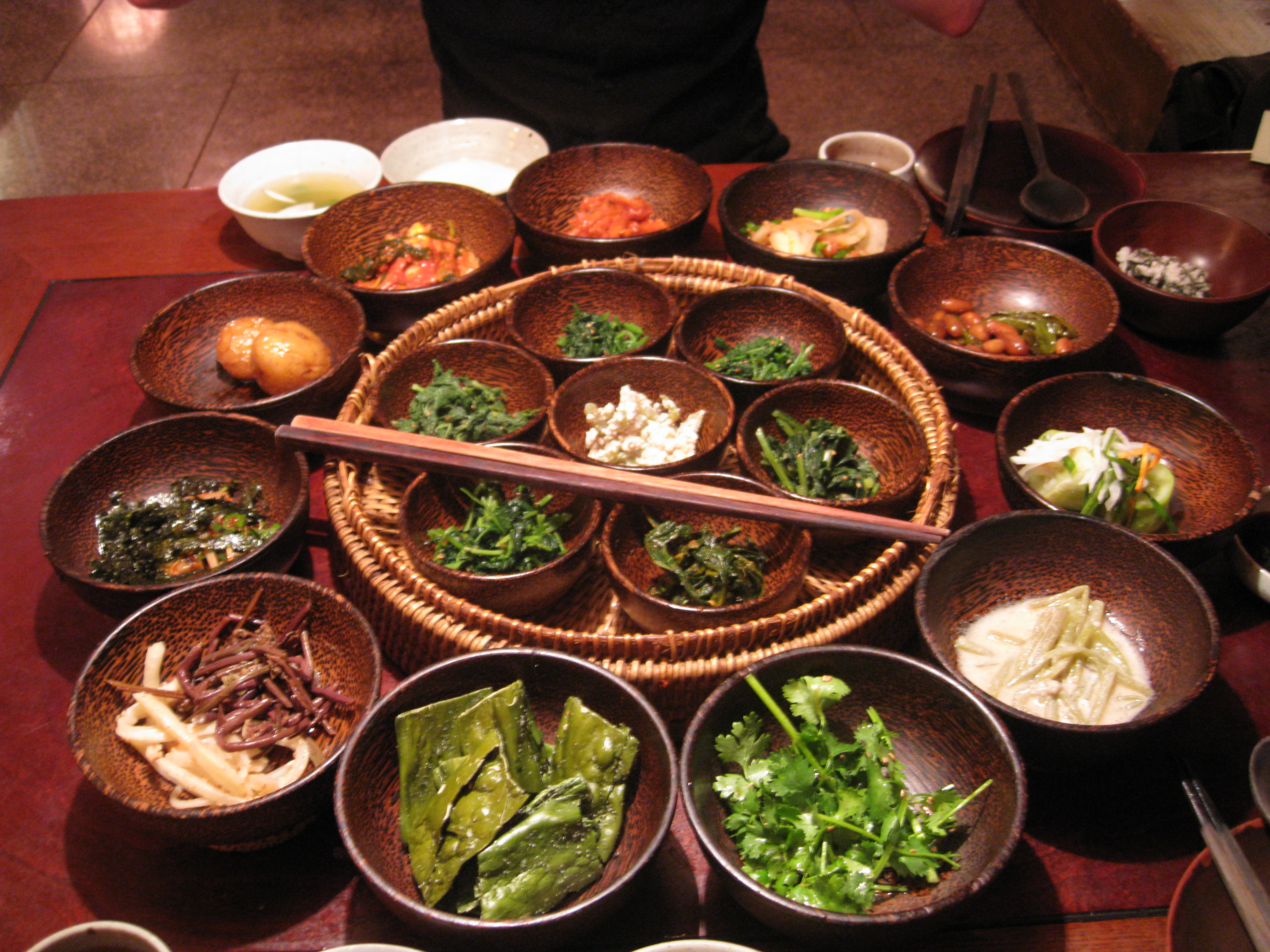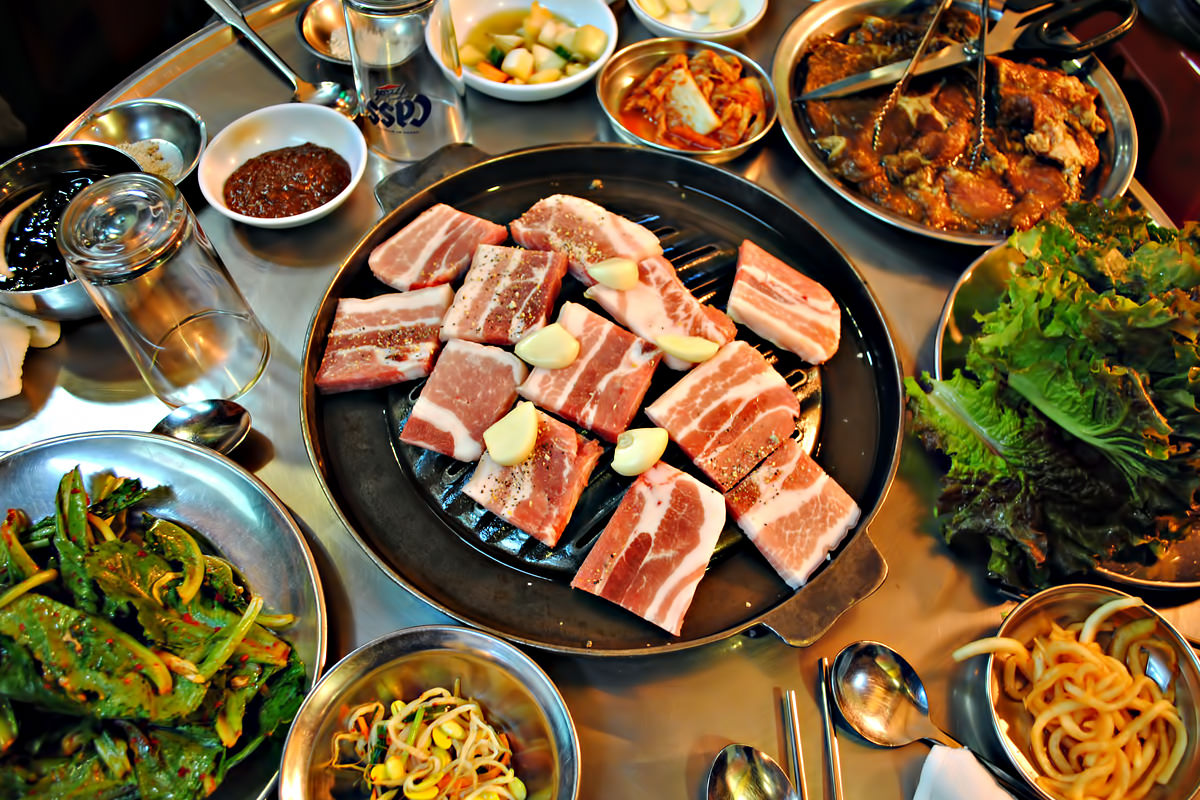
Korea’s largest Buddhist sect in chaos

Under the monster heat wave that has gripped the nation for weeks, Venerable Seoljo, 88, has gone on a hunger strike.
His fast ― albeit he drinks water with bamboo salt ― marked its 40th day on Sunday.
The senior monk’s sit-in protest in a tent set up near Jogye Temple in central Seoul reflects the lingering factional strife inside the nation’s largest Buddhist sect, the Jogye Order.
The Jogye Order is poles apart as a few monastics who control the money and power inside the sect clash with the rest following the outbreak of the corruption scandals surrounding its President Seoljeong.
Seoljeong, who is under fire for various allegations, and Venerable Seoljo are two iconic figures representing the two opposing factions. Being elected Jogye Order president last year, Seoljeong is portrayed as representing the mainstream and the vested interests of the sect, whereas Seoljo is a vocal critic of the “self-serving, ethically flawed” leadership.
On Friday, Seoljeong paid his second visit to Seoljo to encourage the senior monk to stop his hunger strike, expressing worries about the grave health risk.
The Jogye Order leader said he “emptied” his mind, which means he is no longer ambitious to stick with the leadership post.
During a news conference that day, he said he would decide whether to stay or step down from the leadership post as soon as he could, after collecting opinions from other Buddhist leaders.
But his remarks didn’t stop Seoljo from continuing his hunger strike. Seoljo said he would wait and see how things go and then would decide whether to stop fasting or not.
Seoljeong is embroiled in several allegations. He is accused of having a secret wife with whom he has a daughter. In May, MBC’s investigative program “PD Notebook” unveiled an audio file in which a woman identified only by her surname Kim claimed she is the wife of Seoljeong and they have a daughter. She went on to say she had an affair with the Buddhist monk three decades ago.
In a different audio file unveiled by the Jogye Order, however, she denied this. Kim said she was raped by another man and her daughter is the result of her traumatic past.
“PD Notebook” raised new allegations regarding the Buddhist monk and claimed Seoljeong has hidden assets under the name of his brother. Seoljeong denied the allegations.
He filed a lawsuit against Bulkyo.com which initially raised the allegation about his biological daughter, demanding adequate financial compensation for defamation.
The Buddhist monk, however, had not submitted to DNA testing to confirm whether Kim’s daughter is also his.
Amid the allegation, Venerable Seoljo, the former chief monk of Bulguk Temple in North Gyeongsang Province, said whether or not the Jogye Order president has a child is a secondary issue, raising suspicions about Seoljeong’s credentials as Buddhist clergy.
Seoljo claimed Seoljeong is not a Buddhist monk as he was not ordained.
“He was born in 1944. He claimed he received ordination as a Buddhist monastic in 1962 at Tongdo Temple. But this shouldn’t be true,” Seoljo said in a media interview earlier July. “The temple ordains people who are aged 20 or more. I have never heard he had received Buddhist ordination afterwards, which means he is not a Buddhist monk.”
Thus, Seoljo said technically Seoljeong is not eligible for the top job in Jogye Order.
“Those who didn’t go through Buddhist ordination are not monks. Now we are seeing such a person in the leadership position of the Jogye Order. This is nonsensical,” he said.
“You cannot argue whether he has a child or not inside the temple. But you can argue whether he is a Buddhist monk or not inside the temple.”
Park Gwang-seo, president of the Korea Institute of Religious Freedom and a retired professor of physics, said the factional feud inside Jogye Order has continued partly because of failed reforms in 1994 and 1998.
“The two-time reforms were blown opportunities as those who took the helm afterwards failed to make the system transparent. Reform has remained as an unfinished job and this explains why such factional strife and corruption scandals broke out from time to time,” he said.
The 1990s were the darkest days for Jogye Order. The Buddhist sect was plunged into turbulence in 1994 and 1998 as then-presidents Euihyun and Wolju, respectively, unsuccessfully attempted to seek re-election in the face of opposition from their followers, which later led to violent clashes between the two sides.
Those who stood up against the leaders gained the upper hand and have since controlled the Jogye Order. But corruption scandals involving Buddhist leaders and violent clashes continued to occur.
“To be reborn as a transparent sect, Jogye Order needs a revolution-like change,” Park said. “Otherwise it has no future.”
Korean Buddhism’s modern history is full of factional strife, particularly after liberation from Japan.
Like Buddhist monks and nuns in other countries, Buddhist monastics here were not allowed to marry. The tradition changed after the Japanese annexation of Korea. Influenced by Japanese Buddhism which allows monastics to marry once they are ordained, the number of Buddhist monastics who were married increased.
According to unofficial data, married monastics outnumbered traditional ones in the 1950s and the former took over leadership of 25 temples of Jogye Order.
In 1954, then-President Syngman Rhee ordered a purge of married Buddhist monks. Backed by the presidential support, traditional monastics “waged a war” against married ones who overtook the helm in many temples.
The former hired gangs to regain temples in the struggle and the bloody campaign to purify
Buddhism continued until 1962 when then-President Park Chung-hee put the brakes on the factional strife inside Jogye Order by allowing temporarily married monastics to remain.
Some of the gangs who were called up for the factional strife, meanwhile, stayed in temples and some received Buddhist ordination after training.
By Kang Hyun-kyung
(Korea Times)





